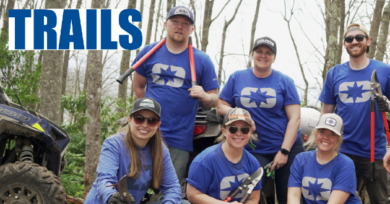Off Road Motorcycles
The off-road market can be broken down into a number of categories, but youth-sized machines continue to lead sales
New unit sales of on-highway motorcycles accounted for 62% of the market in 2002, with off-highway machines topping 31%. Although sales of on-highway motorcycles still reign supreme, competition, enduro, and the dual-sport markets continue to grow stronger as off-road riding gains in popularity.
According to industry estimates, there were 273,368 off-highway motorcycles sold during 2002, a 9.3% rise in sales from the 250,045 units sold during 2001. Of the off-highway motorcycles sold during 2002, competition bikes accounted for 101,595 units, up 4.8% from the 96,935 units sold in 2001; and enduro bikes accounted for 171,773 units, up 12.2% from the 153,110 units sold during 2001.
Dual-sport bikes—not counted as “off-highway” machines—accounted for 20,613 units sold during 2002, up 2.2% from the 20,164 units sold in 2001.
“Much of the sales success stems from an ongoing stream of great new products, both from the motorcycle manufacturers and the aftermarket companies, who distribute gear and accessories,” said Ty van Hooydonk, director of product communications for Discover Today’s Motorcycling, the communications service bureau of the Motorcycle Industry Council (MIC). “Whatever your preference or sense of style, there truly is a bike for everyone today—for women, men, experienced and entry-level riders. And there are lots of smaller off-highway youth models for the next generation of motorcyclists.”
Where’s the growth?
The MIC says there were 29,816 competition bikes in the 0-124cc category sold during 2002, up 14.6% from the 26,026 sold during 2001. At the same time, sales of non-competition bikes, or enduros, in the 0-125cc category accounted for 140,264 units in 2002, a 12.5% rise from the 124,644 units sold in 2001.
One thing to keep in account, however, is that MIC estimates only total 12 major manufacturers, and there are certainly many additional off-road bikes of all sizes being sold from other firms like LEM Motor, Transnational Outdoor Power, Kasea, Tomos, etc.
According to John Petersen of Moto Primo Motorsports, LLC, Minneapolis, Minn., small displacement off-road bikes and associated parts and accessories are proving to be quite lucrative.
“Here, at our store in the city, cruisers seem to lead sales, but at our other store in the suburbs, off-road machines seem to be the vehicle of choice,” Petersen told Powersports Business. “I think one of the biggest trends we’re seeing is 50cc dirt bikes for adults. We do a lot of Honda 50 upgrades—high handlebars, big bore kits, you name it. Dirt bikes always sell, they’re just so much fun, but the 50cc bikes for adults will probably be the trend for the season.”
Petersen isn’t alone in pinpointing this trend. In fact, there are businesses springing up all over the country that cater solely to the small displacement market.
Take, for example, PPS Racing of Canoga Park, Calif. Not a newcomer to the niche, PPS has been outfitting small displacement off-road bikes since 1992.
Mark Thomas, PPS owner, says his business caters to both youth racers and adults. “Minis make up a huge market right now, and it keeps getting bigger and bigger,” Thomas said. “Our business is up 50% over last year. It’s just incredible.”
He said consumers are looking for suspensions, swingarms, shocks, bar kits, front and rear disc brake kits, big bore kits, pipes, carburetor kits, wheels, “just about everything.”
“It all used to be about the Honda XR50s, but the Kawasaki KLX110 stuff is probably going to surpass what we’ve been doing for the Honda,” he said. “The KLX110 was Kawasaki’s best-selling bike last year, and I suspect it will be Suzuki’s number one model this year.
“It used to be that the kids would start out on the 50s, but what I’ve been seeing recently is more of them going to the 110s. A lot of dads have told me that their kids race their butts off on smaller bikes maybe three times a week, but then—like a piece of candy—they’re allowed to get on their 110 as a special treat. That’s what I’m seeing.”
While PPS is located in southern California, Thomas says the majority of his business comes from other parts of the country—most specifically, from the Midwest.
“And, most of the parents who seem to be serious about wanting their kids to be supercrossers tend to spend money,” he said. “I have two bikes in here right now that, when it’s all said and done, the parents are going to be spending $6,000 on each of them, not counting the bike.”
While he makes good money modifying small displacement bikes from major manufacturers, Thomas says he plans to expand his operations in about two months through the release of a price-worthy custom-built mini that he hopes to position in dealerships.
“I want to be able to sell these race-prepped bikes to dealers so consumers won’t have to go buy an XR50 for $1,200 or whatever, and then spend more money outfitting it,” he explained. “And I’m going to try to sell them for $2,995.”




